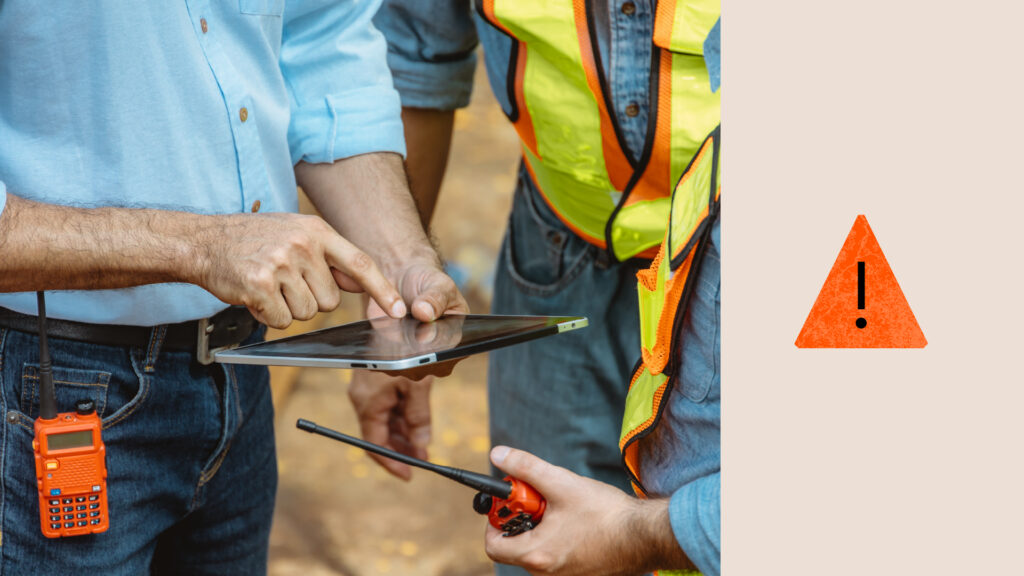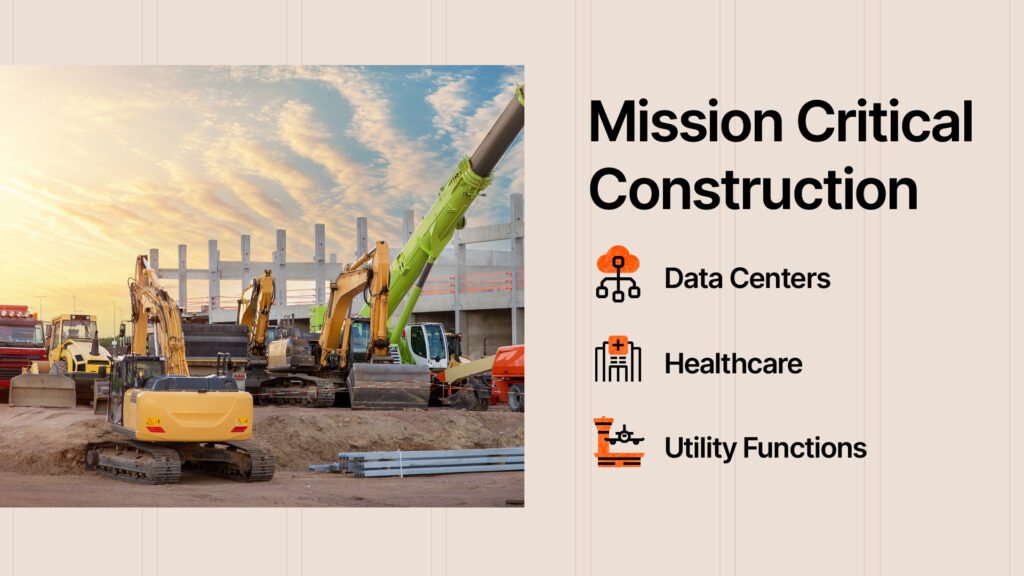— 7 min read
Site Selection at the Edge: The Growing Market for Edge Data Centers
Last Updated Mar 13, 2025
Last Updated Mar 13, 2025

As data centers have emerged from obscurity to become the fastest-growing construction sector, the narrative surrounding the industry’s growth has largely focused on artificial intelligence and the massive data center projects for tech giants like AWS and Meta. But there is an often-overlooked project type on the opposite end of the data center spectrum: edge data centers. These smaller data centers are strategically placed to put computing power closer to where data is generated or consumed.
Demand for these smaller facilities has exploded in parallel with the growing ecosystem of internet-connected devices, vehicles, industrial equipment and other physical objects known as the Internet of Things (IoT). Edge data centers are integral to the adoption of emerging IoT use cases, from automated industrial machinery to self-driving vehicles.
Understanding edge data center site considerations is very important for construction professionals hoping to capture a share of the unprecedented wave of data center development. While they don’t usually generate headlines, edge facilities represent a far more likely entry point into the data center sector than their campus-scale cloud or AI-training counterparts.
This article will outline the site selection criteria for edge data centers and explain the use cases driving their development.
Table of contents
How the IoT Shapes Data Centers
Understanding edge data centers requires understanding the technology driving the vast majority of demand: the Internet of Things.
The IoT, most generally, refers to any object with automated functions connected to the internet. It’s a category that includes a huge range of consumer products: from doorbell cameras and smart watches to AI refrigerators that automatically order food items that need to be replenished.
Even more important is the rapid growth of IoT for industrial and commercial applications. Manufacturers now use equipment like Computer Numerical Control (CNC) machines with a system of cameras and sensors connected to an AI program that can detect the quality of its cuts and perform quality control faster and more accurately than a human operator.
From utilities using “smart grids” to balance power infrastructure, to farmers using connected agriculture equipment that delivers precision fertilization and irrigation based on real-time soil conditions, adoption of IoT at scale by multiple industries is accelerating dramatically.
Latency's Effect on Edge Data Center Locations
The IoT produces a substantial volume of data that needs to be processed at tremendous speeds, also known as low latency — speeds that are important to the safety and performance of the devices.
The low latency required for such real-time IoT applications isn’t possible if the torrent of data produced by the system's cameras, sensors and other equipment must be sent to the cloud. This would require data to travel to a central "core" data center, potentially hundreds of miles away, where the AI computing is located — and then travel all the way back. Even with data traveling at the speed of light, the additional milliseconds are significant.
Latency problems are particularly severe in remote, rural locations due to a lack of network infrastructure, such as optical fiber, which results in slower data transfer speeds.
Additionally, latency can be an issue in dense urban areas where large amounts of data are generated within small areas. This can overload network infrastructure, effectively causing digital traffic jams and subsequently increased latency.
Ensuring low latency for these IoT applications, therefore, requires that much of the data be processed as close to the connected devices as possible — at the network’s edge. Edge data centers are the facilities that house this computing power.
What makes an 'edge' data center?
What makes a data center an edge data center is that its purpose is to reduce latency and take the workload off primary or core data centers.
Edge data centers can take a wide variety of forms. Some are colocation data centers that focus on edge workloads. These are traditional multi-tenant data centers located close to areas with a lot of latency-sensitive IoT data traffic, such as manufacturing, commercial or financial hubs. Some companies have built their own on-premises edge data centers, by converting office space or rooms on corporate campuses. Others have built them into old urban telecom facilities.
Modular, turnkey data center pods, often about the size of a shipping container, are one of the fastest-growing segments of the edge data center ecosystem. These pods can be quickly deployed as an edge solution in a variety of locations, including skyscraper rooftops, office parks and the base of cell towers. Mobile edge data centers can even be deployed near major sporting events or in other situations where high volumes of IoT data traffic may overwhelm local networks.
Factors in Edge Data Center Site Selection
When it comes to site selection, the criteria for edge facilities differ significantly from those for other segments of the industry. The largest consideration, by far, is proximity to specific IoT devices in order to provide the fast processing speeds required for that technology to work correctly.
Indeed, edge data centers are defined more by where they are located than by their physical characteristics — they can entail everything from multi-megawatt colocation data centers to unmanned modular units the size of a shipping container. Here are some of the key factors involved in choosing an edge data center site — and how they differ from the site selection of larger core data centers.
Smaller Land Footprint
The land footprint needed for an edge data center is considerably smaller than traditional data centers. Instead of needing dozens of acres of land and an entire building, edge data centers may only utilize part of an existing building or be built within an existing footprint. Modular data centers can often be installed in the parking lot of a corporate property.
Lower Power Needs
The comparatively lower power consumption of edge data centers means that they are largely unaffected by the power constraints that are hindering the growth of the broader data center industry. Additionally, most edge data center projects are located outside of major data center hubs where these power constraints are most severe.
Network Connectivity & Latency Requirements
Strategic placement near IoT devices is the key factor in selecting edge data center sites. There also needs to be strong connectivity between the data center and those devices, but that can typically be achieved through a basic public internet connection.
When thinking about data center site selection more broadly, one of the primary considerations is the presence of robust network connectivity. Sites need broadband fiber from multiple networks, access to interconnections and direct fiber connections to other data centers. None of that matters nearly as much — if at all — at edge locations.
Low latency between the edge data center and devices is critical — but the edge data center doesn’t necessarily need top speeds or robust connections back to cloud providers or other data centers at the network’s core.
The computing infrastructure at the edge does the vast majority of the processing and vastly reduces the amount of data that needs to be sent back to the core at lower speeds. In some cases, particularly in rural areas, even relatively high latency public internet services like Starlink can serve as an edge data center’s network connectivity.
Stay updated on what’s happening in construction.
Subscribe to Blueprint, Procore’s free construction newsletter, to get content from industry experts delivered straight to your inbox.

For construction pros, the data center opportunity is at the edge.
As the data center industry expands, contractors and other construction professionals of all sizes are looking for ways to capitalize on the data center opportunity. But entry points in the sector are hard to come by. Landing large, mainstream data center projects can often be infeasible — especially for smaller construction operations with no previous data center experience that are looking to break into the field.
Edge facilities provide a rare opportunity for new entrants to cut their teeth in the data center space. These are projects that tend to be simpler and require less technical expertise, opening the door for smaller firms to begin building a track record and experience in the digital infrastructure space. They’re also often in built in regions with little or no large-scale data center development, meaning less competition with established players.
Edge data centers are not as large as their hyperscale or AI counterparts, but they’re a huge part of the industry’s growth picture for those looking to stake out a place on the data center construction landscape.
Was this article helpful?
Thank you for your submission.
0%
0%
You voted that this article was . Was this a mistake? If so, change your vote here.
Scroll less, learn more about construction.
Subscribe to The Blueprint, Procore’s construction newsletter, to get content from industry experts delivered straight to your inbox.
By clicking this button, you agree to our Privacy Notice and Terms of Service.
Categories:
Tags:
Written by
Tim Tuberville
Tim Tuberville is a Data Center Specialist for Procore, focusing on a broad range of customer segments. Over the course of his stellar career Tim has proven to be a staunch advocate of the industry, championing and embracing new technologies while driving revenues for market leaders like Dell Technologies, and a host of others. His principled approach to service is the hallmark of his brand and allows him to positively impact his customer base. Tim holds a Bachelor’s degree in Public Relations, Advertising, and Applied Communications from Texas Tech University located in Lubbock, Texas.
View profileExplore more helpful resources

Tackling the Top 10 Construction Industry Issues
The construction industry is constantly evolving, bringing both opportunities and challenges. Companies must navigate an array of construction industry issues — from workforce shortages to integrating new technologies into their...

Mission Critical Construction: Strategies for Success
Mission critical construction involves building structures whose functions cannot afford to fail, as any disruptions can lead to significant consequences for society. Keeping data centers, hospitals, power plants and other...

Modular Construction and MEP: A Collaborative Pairing
In an age of supply chain disruptions, workforce shortages, and rising material costs, off-site construction — including modular construction methods and prefabricated materials — is surfacing as a multipurpose solution....

Connected Construction: Transforming the Industry Through Integration
Construction projects are becoming increasingly complex, so companies need to innovate to accurately and profitably complete these modern structures. Connected construction — using technology and data to improve communication, processes...